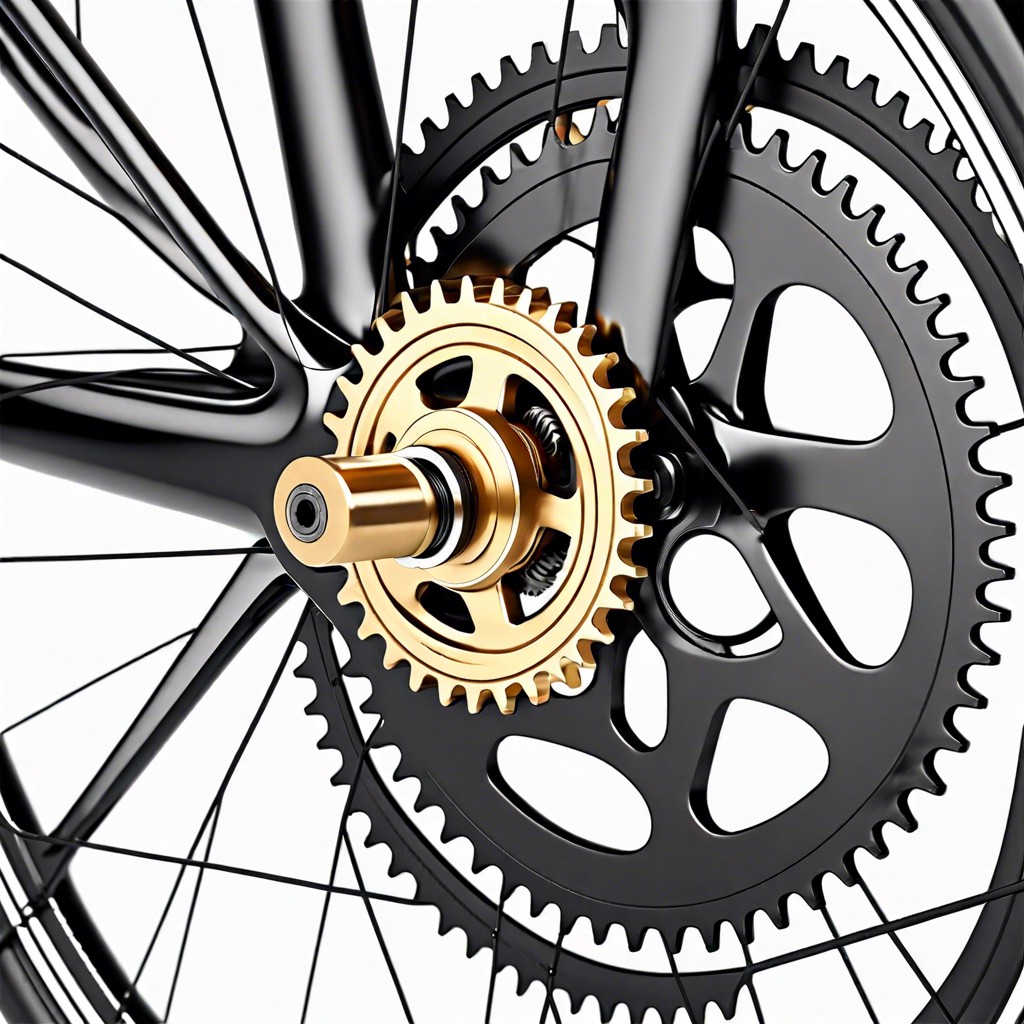Learn how to shift gears on your bike smoothly and effortlessly with these straightforward tips.
Key takeaways:
- Gears help you pedal efficiently on different terrains.
- Shifters control the movement of the chain between gears.
- Different shifting systems require different techniques.
- Anticipate terrain changes and shift accordingly.
- Shifting gears helps maintain a steady cadence and ride efficiently.
What Are Bike Gears?

Bicycles come with gears to help you pedal efficiently on different terrains. Simply put, gears are a system of cogs and chains that adjust your pedal resistance.
- Low gears make pedaling easier. You use them when climbing hills.
- High gears make pedaling harder. They’re useful for speeding down flats.
- The front cogs are called chainrings, attached to the pedals.
- The rear cogs are the cassette, connected to the rear wheel.
- Combining different chainrings and cassette cogs lets you find the perfect balance for your ride.
Understanding gears can transform your biking experience. Efficient shifting optimizes energy use and keeps your ride smooth.
How Do Gear Shifters Work?
Gear shifters are your gateway to a smoother ride. They connect to your bike’s derailleurs, which move the chain between different gears. Here’s the basic nitty-gritty:
Shifters: Located on your handlebars, these little levers or twist grips are your control center. Pull or twist them to change gears.
Derailleurs: These are the mechanical arms that push the chain onto different sprockets. There’s usually one for the front (near the pedals) and one for the rear (near the back wheel).
Cable System: A cable runs from your shifters to the derailleurs. When you shift, this cable tightens or loosens, moving the derailleur and, therefore, the chain.
Rear Shifting: This affects the smaller gear cogs, helping with fine-tuning. It’s where most of your adjustments will happen.
Front Shifting: This involves the bigger chainrings. Use these for major adjustments like switching from uphill grinding to flat-out sprinting.
Learning how these parts interact will make shifting feel like second nature.
How To Change Gears With Different Shifting Systems
For twist shifters, rotate the grip towards you to shift to a harder gear and away from you for an easier one. It’s like turning a motorcycle throttle.
Trigger shifters usually have two levers. Use your thumb to push one lever for an easier gear, and your finger on the other lever to shift to a harder one. Think of it as playing a video game—a quick flick.
For downtube shifters, typically seen on older bikes, you’ll move the lever up or down. This demands a bit more coordination, so it’s best to practice when you’re not in heavy traffic.
With electronic shifters, just press a button for seamless shifting. It’s like changing the TV channel with a remote—simple and efficient.
Remember, always pedal gently while shifting to prevent any mishaps and keep the ride smooth.
Tips for Better Shifting
Smooth shifting can make your ride a breeze. Here are some tips to keep in mind:
Anticipate changes in terrain. Shift before you hit a hill, not while you’re struggling up it. This prevents chain stress.
Ease off the pedals slightly as you shift. This helps gears mesh smoothly without grinding.
Regularly clean and lube your drivetrain. A gunk-free chain moves between gears effortlessly.
Avoid cross-chaining. This happens when you use the smallest chainring with the smallest cog, or the largest with the largest. It wears out your equipment quicker.
Practice makes perfect. Spend some time in a quiet area experimenting with your gears. Over time, muscle memory will kick in.
Remember, consistency is key. Shifting too sporadically can lead to unexpected surprises. Find a rhythm that suits your ride.
Why Do I Need to Shift Gears?
Shifting gears helps you ride more efficiently and comfortably. When you’re climbing hills, a lower gear makes pedaling easier. On flat surfaces, higher gears let you go faster without tiring yourself out.
It also helps you maintain a steady cadence, or rhythm, which makes your ride smoother and reduces strain on your knees. Consistent cadence means less fatigue over long distances.
Different terrains and conditions require different gears. If you’re battling a headwind, dropping to a lower gear can help you power through without burning out.
Finally, gears allow you to make the most out of your bike and enjoy the ride, whether you’re a casual cyclist or a more serious rider.